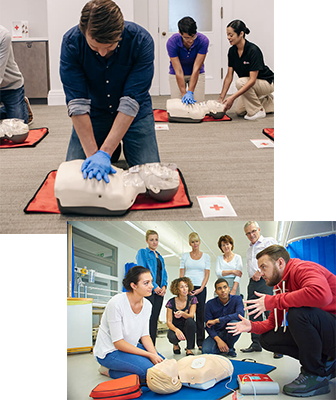CPR Certification is important for everyone to have. You never know when someone near you will experience a breathing, choking, heart, or other emergency. With the right training and tools, you may be able to save someone’s life.
We specialize in providing training courses that lead to certifications in CPR, First Aid, and other emergency care areas. These certifications are internationally accepted and respected by employers, volunteer organizations, regulatory associations, and public health groups alike.
Cardio Pulmonary Resuscitation (CPR)
Do you know that over million-and-a-half heart attacks happens every year, and more than 20% of people die before even reaching a hospital. Latest data shows that cardiac arrest is becoming the number one cause of death.
When the heart stops, the absence of oxygenated blood can cause permanent brain damage in only a few minutes. Death will occur within approximately 8-10 minutes.
Statistics show that the earlier CPR is initiated, the greater the chances of survival. In fact, chances of survival are doubled if help is provided within four minutes. This few minutes can be the difference between life and death.


During cardiac arrest, there is no blood flow. Chest compressions create a small amount of blood flow to the vital organs such as the brain and heart – the more effective the chest compressions, the more blood flow is produced. Chest compressions that are too shallow or too slow or chest compressions that are interrupted frequently do not deliver as much blood flow to the brain and heart as effective chest compressions. Every time chest compressions are restarted following an interruption, the first few compressions are not as effective as later compressions. Frequent or prolonged interruptions in chest compressions decrease blood flow and the victim’s chance of survival.
CPR may not save the victim even when performed properly, but if started within 4 minutes of cardiac arrest and defibrillation is provided within 10 minutes, a person has a 40% chance of survival.
CPR provides a trickle of oxygenated blood to the brain and heart and keeps these organs alive. In other words, Cardio Pulmonary Resuscitation (CPR) serves as an artificial heartbeat and an artificial respirator until defibrillation can shock the heart into a normal rhythm or emergency equipment arrives.

